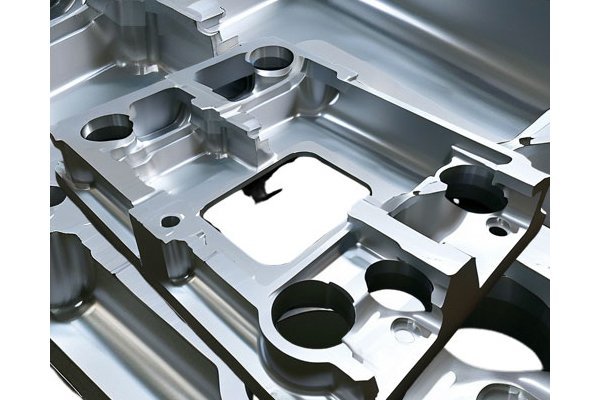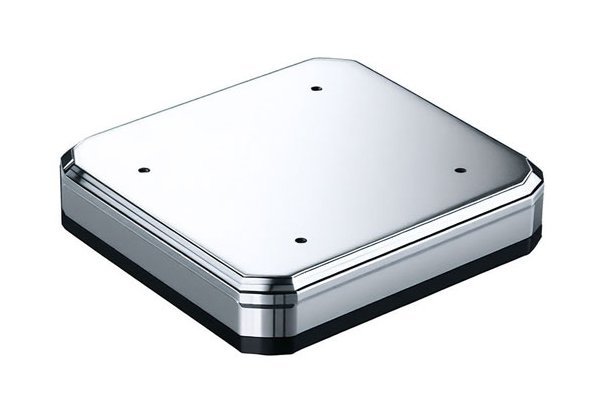: Captivating Statistics
Did you know that nearly 75% of new product failures can be attributed to poor design? The light at the end of the tunnel for many businesses struggling with product development lies in rapid prototyping—a powerful tool that significantly enhances the design process. With the growing trend to leverage advanced technologies, rapid prototyping CNC services—especially from manufacturing hubs like China—have become a game-changer. As we delve deeper into this topic, we’ll uncover why these services have garnered immense popularity and how they can solve persistent challenges in product design and development.
Understanding Rapid Prototyping
What is Rapid Prototyping?
Rapid prototyping is a process that allows designers and engineers to create a physical model of a product quickly. The term encompasses a variety of technologies, including CNC (Computer Numerical Control) machining, 3D printing, and injection molding. The primary aim of rapid prototyping is to facilitate the visualization and testing of ideas, reducing the time it takes to go from concept to production.
The Role of CNC in Rapid Prototyping
CNC machining has emerged as one of the most reliable methods for rapid prototyping. Utilizing computer-controlled tools, CNC machines can produce highly accurate prototypes from various materials, including metals, plastics, and composites. The precision of CNC machining enables the production of functional prototypes that can be tested and refined, making it an integral part of the design process.
Advantages of Using CNC Services in China for Rapid Prototyping
One of the most compelling reasons to utilize CNC services in China is the cost-effectiveness. Labor and production costs in China are generally lower than in Western countries, allowing companies to receive high-quality prototypes without breaking the bank. This financial advantage is crucial for startups and small businesses that require budgeting flexibility.
China is home to advanced manufacturing technologies, including state-of-the-art CNC machines. These machines ensure that prototypes are produced with exceptional accuracy and high-quality finishes. This high level of precision is essential for ensuring that prototypes accurately represent the final product, helping to reduce design flaws during the development stage.
Speed is a cornerstone of rapid prototyping. Chinese CNC service providers understand the importance of timelines and often offer rapid turnaround times without compromising quality. With their sophisticated technologies and streamlined processes, prototypes can be developed and delivered in a shorter timeframe, enabling faster product launches.
CNC machining in China supports a wide range of materials, including metals like aluminum, steel, and titanium, as well as various plastics and composites. This versatility allows businesses to create prototypes that closely mimic their intended final products, facilitating better testing and validation.
Complex shapes and intricate designs are easily achievable through CNC machining. Chinese manufacturers often offer customized solutions tailored to specific project needs. This capability is essential for industries with unique requirements, such as automotive, aerospace, and medical devices.
China has rapidly become a global leader in manufacturing due, in part, to its skilled workforce and commitment to innovation. By partnering with Chinese CNC service providers, companies gain access to experienced professionals who can offer valuable insights and insights throughout the prototyping process.
The Prototyping Process Using CNC Services
Step 1: Concept Development
Every prototyping project starts with an idea. Engaging in thorough research, brainstorming sessions, and sketches can help solidify the design concept. At this stage, it’s critical to focus on the key functions and features you want the end product to possess.
Step 2: CAD Modeling
Once the concept is refined, the next stage is to create a Computer-Aided Design (CAD) model. This digital representation reflects all dimensions and specific design elements of the prototype. High-quality CAD models are essential as they directly influence the precision of the CNC machining process.
Step 3: Selecting Materials
Choosing the right material is crucial in prototyping, as it affects the performance of the prototype significantly. Several factors come into play, such as strength, flexibility, and heat resistance. Depending on the intended application, materials like aluminum for light-weight structures or plastics for specific functionality may be prioritized.

Step 4: CNC Machining
Once the CAD design is ready and materials selected, the CNC machining process begins. Machines read the CAD files and execute precise cuts and shapes to create the prototype. Manufacturers ensure that the prototypes are fabricated to the exact specifications provided in the CAD model.
Step 5: Finishing Touches
After the machining is complete, prototypes may require further finishing touches such as painting, polishing, or assembling components. This step ensures that the prototype reflects the desired aesthetics and is functional for testing purposes.
Step 6: Testing and Feedback
With the prototype ready, engaging in testing and collecting feedback is essential. Assess how the prototype performs against the expected functionalities. Gathering user input can provide valuable insights that guide further refinements and ultimately lead to a more successful end product.
Common Applications of Rapid Prototyping CNC Services
In the automotive sector, rapid prototyping is crucial for developing new vehicle models and components. CNC services enable manufacturers to create functional prototypes that undergo testing for performance and safety. This iterative process leads to innovations in vehicle design and functionality.
In aerospace, where safety and precision are paramount, CNC machining is utilized for creating prototypes of complex components, such as turbine parts and airframe structures. Rapid prototyping helps identify design flaws early, reducing the risk of failure during flight.
The medical industry often requires highly specialized parts that must meet stringent regulatory requirements. Rapid prototyping through CNC allows for quick development and testing of medical instruments, surgical tools, and prosthetic devices at a lower cost and quicker pace.
Rapid prototyping CNC services are also widely used in the consumer electronics sector to design and manufacture functional prototypes for gadgets, appliances, and devices. Fast iterations lead to features that resonate well with consumer needs.
Overcoming Challenges in Rapid Prototyping
While the advantages seem extensive, challenges can also arise when utilizing rapid prototyping CNC services in China. Here are some common issues and strategies for overcoming them:
Language differences and cultural nuances may pose challenges. Businesses can mitigate this risk by hiring local consultants or utilizing professional translation services to ensure clear communication.
Ensuring quality in production is vital. Collaborating with reputable manufacturers who have established quality control measures in place can significantly remediate potential quality challenges.
When outsourcing production, companies may worry about protecting their intellectual property (IP). Engaging in non-disclosure agreements (NDAs) and vetting service providers can help safeguard sensitive information.
: Embracing Rapid Prototyping CNC Services
In today’s competitive market, where time-to-market is of the essence, embracing rapid prototyping CNC services—particularly those in China—can streamline product development. From cost-effectiveness to high precision and diverse material options, the advantages are numerous.
By following the outlined prototyping process and leveraging the expertise available in the Chinese manufacturing landscape, businesses can mitigate risks and enhance the probability of launching successful products.
As we summarize the core elements covered in this blog, it’s crucial to appreciate how rapid prototyping transforms traditional approaches to product design. If you are a business aiming to innovate and stay competitive, investing time and resources into understanding and utilizing rapid prototyping CNC services in China is not only beneficial but essential for staying ahead in your industry. Reflect on this transformative process, as it may hold the key to unlocking your next big idea.






